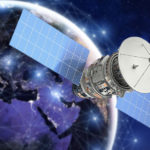624
Points
Questions
72
Answers
119
-
Asked on 13th December 2023 in Aeronautics.
1\,mile = 5280\,ft;1\,bhp = 550\,ft.lb/sc_{t} = \frac{c\left ( v_{\infty} \right )}{\eta _{p}} = \frac{0.375\,\frac{lb}{bhp.h}\left ( 200\,mi/h \right )}{0.85} = \frac{0.375\frac{lb}{\frac{550\,ft\,.lb\times 3600\,s}{s}}\left ( 200\,\times \frac{5280\,ft}{h} \right )}{0.85}
\Rightarrow c_{t} = 0.235/h
- 542 views
- 1 answers
- 0 votes
-
Asked on 13th December 2023 in Aeronautics.
P_{eq,shaft} = P_{shaft} + P_{Thrust}P_{shaft} = 4910
P_{Thrust} = \frac{T_{j}V_{\infty}}{\eta _{p}} = \frac{250\left ( 500 \right )}{ 0.9} = 138888.89
\Rightarrow P_{eq,shaft} = 4910 + 138888.89 = 143798.89
- 552 views
- 1 answers
- 0 votes
-
Asked on 12th December 2023 in Aeronautics.
\frac{T}{T_{V=0}} = 0.369M_{\infty}^{-0.305}\Rightarrow T_{3\,km} = 50000\left \{ 0.369\left ( 0.6 \right )^{-0.305} \right \} = 21560.57\,lb
- 516 views
- 1 answers
- 0 votes
-
Asked on 11th December 2023 in Aeronautics.
TSFC = \frac{W_{f}}{Thrust\times time}W_{f} = 1000 \times 6.7 = 6700\,lb
time = \frac{W_{f}}{TSFC \times Thrust}
\Rightarrow time = \frac{6700}{0.5\times 60000} = \frac{6700}{30000} = 0.223\,hrs
- 534 views
- 1 answers
- 0 votes
-
Asked on 8th December 2023 in Aeronautics.
T = \left ( \dot{m}_{air} + \dot{m}_{fuel} \right )V_{e}-\dot{m}_{air}V_{\infty }\dot{m}_{fuel} = 0.03\dot{m}_{air}
\Rightarrow T = \left ( \dot{m}_{air} + 0.03\dot{m}_{air} \right )V_{e}-\dot{m}_{air}V_{\infty }
\Rightarrow T = \dot{m}_{air}\left ( 1.03V_{e}-V\infty \right )
\Rightarrow \dot{m}_{air} = \frac{T}{1.03V_{e} – V_{\infty}} = \frac{25000}{1.03\left ( 1700 \right )-220}=16.33\,slug/s
\dot{m}_{air} = P_{\infty }V_{\infty}A_{inlet}
A_{inlet} = \frac{\dot{m}_{air}}{ P_{\infty }V_{\infty}} = \frac{16.33}{0.002377\left ( 220 \right )} = 31.23\,ft^{2}
- 646 views
- 1 answers
- 0 votes
-
RE: The GE J-79 turbojet produces a thrust of 10,000lbs at sea level. The inlet diameter is 3.19 ft.Asked on 7th December 2023 in Aeronautics.
(a) \dot{m} = \rho AV = 0.0023769\left ( \frac{\pi}{4}\times3.19^{2}\right )\times 1000 = 18.996\, Slug/S = 611.178\, lbm/S
F_{Thrust} = \dot{m}V_{relative}
\Rightarrow 10000 = 611.178\times V_{relative}
V_{relative} = 16.362\, ft/S
(b) \eta _{p} = \frac{2}{1 + \frac{V_{e}}{V_{a}}}
V_{e} = V_{rel} + V_{a} = 16.362 + 1000 = 1016.362\, ft/S
\frac{V_{e}}{V_{a}} = \frac{1016.362}{1000} = 1.016
\Rightarrow \eta _{p} = \frac{2}{1 + 1.016} = 0.992- 476 views
- 1 answers
- 0 votes
-
Asked on 30th November 2023 in Aeronautics.
Low-speed lift coefficient, C_{L} = C_{N}\cos\alpha
\alpha = 25^{\circ} = 0.4363\,rad
\frac{C_{N}}{\left ( S/d \right )^{2}} = 2\pi \left ( \frac{\alpha }{S/d} \right )+4.9\left ( \frac{\alpha }{S/d} \right )^{1.7}
\frac{\alpha }{S/d} = \frac{0.4363}{0.425} = 1.0266
\frac{C_{N}}{\left (0.425 \right )^{2}} = 2\pi \left (1.0266 \right )+4.9\left (1.0266 \right )^{1.7}
\Rightarrow C_N=2.09
\Rightarrow C_{L} = 2.09\left ( \cos 25^{\circ} \right )=1.89
- 462 views
- 1 answers
- 0 votes
-
Asked on 29th November 2023 in Aeronautics.
(a) M_{\infty}=2; \alpha = 1.5^{\circ} = 0.02618\,rad
C_{L}=\frac{4\alpha }{\sqrt{M_{\infty}^{2}}-1}= \frac{4\left (0.02618 \right )}{2^{2}-1}=0.0605
(b) C_{L} = \frac{C_{l}}{\sqrt{1+\left ( \frac{a_{0}}{\pi\,AR} \right )^{2}}+\frac{a_{0}}{\pi AR}}=\frac{0.0605}{\sqrt{1+\left ( \frac{2\pi}{\pi 2.56} \right )^{2}}+\frac{2\pi}{\pi 2.56}}=0.02951
(c) AR = 2.6; TR = 1; \wedge = 60^{\circ}
\beta =\sqrt{M_{\infty}^{2}-1}=\sqrt{2^{2}-1}=1.732
Tan \wedge = Tan 60^{\circ}=1.732
AR\,Tan \wedge = 2.6\times 1.732 = 4.503
C_{Na} = \frac{4.1}{1.732}=2.367\, per\,rad\,= 0.0413\,per\,deg
\Rightarrow C_{L} = C_{Na}\alpha= 0.0413\left ( 1.5 \right )=0.062
- 471 views
- 1 answers
- 0 votes
-
Asked on 13th November 2023 in Aeronautics.
Using Helmold’s relation a_{0}=0.105/deg = 6.016/radian;\alpha _{L=0} = -2.2^{\circ}
Therefore,
a = \frac{a_{0}}{\sqrt{1+\left ( \frac{a_{0}}{\pi AR} \right )^{2}}+\left ( \frac{a_{0}}{\pi AR} \right )}=\frac{6.016}{\sqrt{1+\left ( \frac{6.016}{15 \pi} \right )^{2}}+\frac{6.016}{15\pi}} = 2.0757/ radian = 0.0362 /deg
Therefore,
C_{L} = 0.0362[5-(-2.2)]=0.261
On using Prandtl’s lifting line theory,
a =\frac{a_{0}}{1+\frac{a_{0}}{\pi AR}}= \frac{6.016}{1+1.2766}=2.643 /rad = 0.0461/deg
C_{L}=0.0461(7.2)=0.332
Prandtl’s lifting line theory gives a higher result.
- 514 views
- 1 answers
- 0 votes
-
Asked on 13th November 2023 in Aeronautics.
(a) Lift coefficient at low speeds(incompressible flow), a_{0} = 6.016/radian
a = \frac{a_{0}}{1 + \frac{a_{0}}{\pi e_{1} AR}}a = \frac{6.016}{1+\frac{6.016}{\pi\left ( 0.90 \right )4}}= 3.927/radian = 0.0685/degreeC_{L0} = a\left ( \alpha -\alpha _{L=0} \right )=0.0685\left ( 5-\left ( -2.2^{\circ} \right ) \right )=0.493(b) Lift coefficient for M_{\infty} = 0.7. C_{L} = \frac{C_{L0}}{\sqrt{1-M_{\infty}^{2}}}=\frac{0.493}{1-0.7^{2}}=0.6903
- 626 views
- 1 answers
- 0 votes



